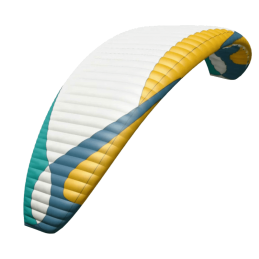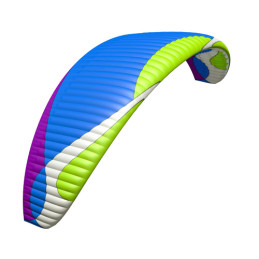The choice of one's equipment must be thoughtful and meet certain criteria. Although manufacturers define well on their sites for whom their wings are intended, here is a small summary to help you in your purchase.
The previous article dealt with the spirit in which you choose your paraglider, and the criteria for choosing it. I invite you to read it here.
Here is now the guide to choosing your wing from the main criteria:
1 - The certification level
Along with the surface of the wing, this is the most important criterion. It is useless and dangerous to fly a wing that is too difficult for you.
It's easy to notice people who have let their ego choose their wing: They have a racing wing, and they stay on the takeoff saying it's too strong while pilots under EN B wings are in the air.
The goal is to get in the air safely without getting bored. Any pilot's paragliding practice must fall somewhere in between. In addition to good flying conditions, it is essential to choose a wing that is appropriate for your level.
The chart below, created with the help of experienced instructors and equipment dealers, delineates the possible choices according to one's level. It's a school director's way of helping you choose the best wing for your level.
We have classified pilots into 2 categories, those who have been flying for less than 3 years and the others.
Once this choice is made, the annual practice volume, the year prior to purchase, must be considered. Inflating hours are not included but are implied. They represent about 10% of the annual flying time for an average pilot, and 100% for an avid pilot (as much inflation as flying).
Example usage:
- "I've been flying for 4 years, and I flew 50 hours last year...which category should I choose?"
- The pilot will be able to opt for a C-rated wing, especially if he often practices ground inflation.
OK, the category is chosen.
2 - The registration weight range.
Directly related to the surface of the wing, the weight range is chosen by the manufacturer for a given surface. Each surface depends on the brands and years. In order to choose your wing, you must not only be in the range of the wing, but also be well positioned in it. A wing will behave slightly differently at the top or bottom of the range.
-A pure rando flight pack will weigh between 3 and 7kg.
-An everyday pack will weigh between 8 and 15kg.
-An acro or cross country competition pack is around 20kg.
Example:
Let's take a wing whose weight range, 85-105kg , mentions the total flying weight (TFW). This is the pilot on a scale with his paragliding bag. You need to add about 15 kg of gear in total to your weight.
So, the glider would fit a 70-90 kg pilot, but there's more to it.
A feisty, reflexive 22-year-old of 71 kg would be bored under this wing. A 55 year old family man weighing 88 kg, on the other hand, might find himself with a wing that is too reactive and fast. Do you see where I'm going with this?
We can summarize the size choice as follows:
- Lower Range: Slower, damped wing, slightly lower sink rate. Ideal for a quiet pilot or flying in small conditions.
- High Range: Faster, crisper wing, slightly higher sink rate. Ideal for a toned pilot or flying in strong conditions.
The difference in sink rate is almost insensitive between a wing loaded to the maximum, or minimum. The horizontal speed, however, will vary by almost 5 km/h.
What happens if you fall outside the range?
It's not recommended, but it's not serious either. The wing just hasn't been certified for these conditions, it will be extremely slow and sluggish below the weight range, and ultra-dynamic above.
3 - The brand and price
This is a subjective criteria. If you choose a recent wing that is adapted to your practice with the help of the tools above, you can't go wrong: the big brands only make good wings. When choosing a new wing, the year of launch is an important criterion, and it is better to choose the most recent wing possible. Brands renew their models every 3 years or so.
4 - Choosing your used wing
On the used market, focus your choice on wings less than 10 years old. Beyond that time you will find almost only obsolete wings.
The chosen wing must have undergone a material strength test if it is more than 3 years old, this is the Paraglider Technical Control. The pitch check is incidental on EN A, B, or C category wings, or DHV 1, 1-2, and 2, since a pitch change is significant on elongated, high performance or acro wings.
Refer to the wing selection guide, ask the vendor for material checks.
I hope this guide will help you better choose your future paraglider, feel free to contact me or leave a comment if you have any doubt.
Happy flying, and remember: the fun is in the air, not in the wing.
Cyrille Marck









